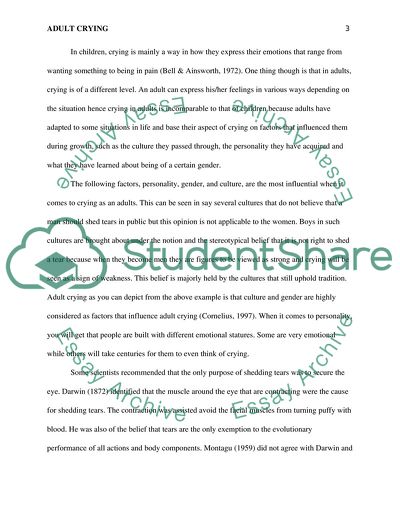Cite this document
(“Adult Crying: culture, personality and gender (Arabs, European, Literature review”, n.d.)
Adult Crying: culture, personality and gender (Arabs, European, Literature review. Retrieved from https://studentshare.org/psychology/1623760-adult-crying-culture-personality-and-gender-arabs-european-persian
Adult Crying: culture, personality and gender (Arabs, European, Literature review. Retrieved from https://studentshare.org/psychology/1623760-adult-crying-culture-personality-and-gender-arabs-european-persian
(Adult Crying: Culture, Personality and Gender (Arabs, European, Literature Review)
Adult Crying: Culture, Personality and Gender (Arabs, European, Literature Review. https://studentshare.org/psychology/1623760-adult-crying-culture-personality-and-gender-arabs-european-persian.
Adult Crying: Culture, Personality and Gender (Arabs, European, Literature Review. https://studentshare.org/psychology/1623760-adult-crying-culture-personality-and-gender-arabs-european-persian.
“Adult Crying: Culture, Personality and Gender (Arabs, European, Literature Review”, n.d. https://studentshare.org/psychology/1623760-adult-crying-culture-personality-and-gender-arabs-european-persian.


